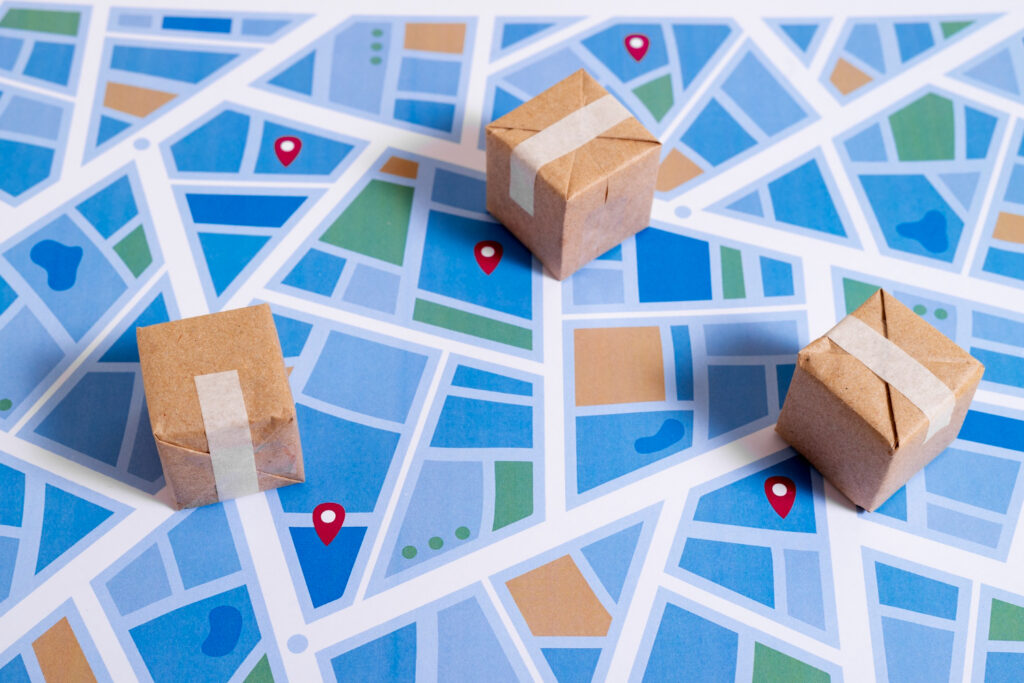“Most marketing experts agree that it’s not enough to give customers a satisfying initial experience with a product. Instead, product managers must offer them a compelling series of experiences—a customer journey—to keep them coming back for more.” – Ahir Gopaldas and Anton Siebert, Harvard Business Review.
Understanding the stages in the retail customer journey is key for retailers who want to improve customer relations, increase sales, and build brand awareness. A clear view of a shopper’s journey helps businesses tailor marketing campaigns, refine in-store and online experience, and personalize the needs of their target audience. This guide can help retail decision-makers gain the knowledge necessary to analyze and improve each stage of the retail customer journey, resulting in a more efficient and satisfying shopping experience.
What Is Customer Journey Mapping?
Customer journey mapping is a way to visualize the customer experience and how they interact with your business. The goal in mapping that journey is to remove the obstacles and make the process friction-free and intuitive. The more seamless an experience is, the better the customer experience will be.
“At its heart, customer journey mapping puts the customer at the center of everything you do. Instead of looking first at your priorities and making assumptions about how to motivate customers to meet your goals, consider the customer first and how they will move through the funnel.” – Andy Steuer, Forbes.
Why is Understanding the Customer Journey Valuable?
Understanding the customer journey helps decision-makers identify optimal marketing channels and touchpoints for interacting with the target audience. This knowledge allows marketers to more effectively allocate advertising resources.
What is a customer journey touchpoint?
Customer touchpoints are the moments during the journey wherein the customer makes contact, interacts or engages with a business. Touchpoints can come before a purchase, during the purchasing experience, after a purchase is made, or when the customer uses the product or service. Common examples of touchpoints include: websites, SEO, advertising, emails, text messages, social media, blogs, discussion forums, product reviews.
Remember: Touchpoints are key because they affect a customers’ experience and their perception of a brand.

Five Stages of the Customer Journey
1) Awareness Stage
In the awareness stage, customers first discover your brand and products, often through passive encounters like online ads, social media, or word-of-mouth. This phase is about attracting attention and creating a lasting first impression. Marketers aim to make the brand visible to potential customers, helping them recognize it as a possible solution to their needs. For customers actively researching solutions, your brand’s visibility in search results and online content becomes critical.
Actionable Tips: Increase visibility through SEO, social media advertising, and content marketing. Use engaging blog posts, videos, and social media content to build awareness and interest.
2) Consideration Stage
During the consideration stage, potential customers evaluate their options, comparing features, benefits, and prices. They explore different brands, look for reviews, and consider product details to see if your offerings meet their needs. This phase is all about demonstrating value and building trust to guide the customer toward choosing your brand.
Actionable Tips: Provide clear, detailed product information and encourage customer reviews. Use live chat support or interactive tools, such as product finders or comparison guides, to help customers make informed decisions.
3) Decision Stage
In the decision stage, customers are ready to make a purchase but need reassurance that they’re making the right choice. Factors such as ease of checkout, payment options, and final offers or discounts can significantly impact their decision. A seamless and supportive buying process can tip the scales in your favor.
Actionable Tips: Optimize the checkout process for ease and convenience, offering multiple payment options and clear navigation. Use limited-time discounts or free shipping to encourage immediate purchases.
4) Post-Purchase Experience
After a purchase, the post-purchase stage is crucial for reinforcing customer satisfaction. Effective follow-up communication can minimize buyer’s remorse and enhance the customer experience. Brands that stay connected and show appreciation for the purchase are more likely to secure repeat business.
Actionable Tips: Send order confirmations, shipping updates, and thank-you messages to build a positive relationship. Request feedback through post-purchase surveys to understand customer satisfaction and areas for improvement.
5) Loyalty and Advocacy
The final stage focuses on creating loyal customers who advocate for your brand. By fostering a strong connection, you can turn satisfied customers into repeat buyers and brand ambassadors who spread positive word-of-mouth.
Actionable Tips: Reward loyalty with exclusive offers or a points-based program. Encourage customers to share their experiences on social media and create shareable content to amplify their advocacy.
Tracking the Customer Journey
To understand the customer journey, gather data from various touchpoints—website analytics, social media interactions, and post-purchase feedback. Use this data to identify pain points, enhance the customer experience, and refine marketing strategies.
Key Takeaways: Understand the Customer Journey
- Understand and Map the Customer Journey: Visualizing the customer journey helps retailers identify pain points and promotional opportunities, ensuring a smoother customer experience from awareness to loyalty.
- Optimize Customer Touchpoints to Enhance Brand Perception: Every interaction, from ads to product reviews, influences customer perception of a band. So, it is critical to make each touchpoint interaction count.
- Align Strategies with Each Stage of the Journey: Tailor marketing, sales, and support efforts to meet customer needs at each stage of the journey.
- Leverage Data to Refine and Improve Continuously: Use data from customer interactions and feedback to adapt strategies and meet changing customer expectations.
- Improve Loyalty for Long-Term Growth: Loyal customers bring sustained revenue, positive word-of-mouth promotion, and brand advocacy—key drivers for lasting success in retail.
“Touchpoints affect your customers’ experience and their perception of your brand. When you provide a smooth journey from discovering your business until they buy from you and reach out to you after purchase, they’ll remember you as a helpful and reliable company.” – Gustavo Bianco.
Final Thoughts
For retailers, understanding the stages of the retail customer journey is essential. Each stage offers opportunities to enhance customers’ experience and build lasting relationships. Retailers who prioritize understanding their customer’s shopping journey can expect higher customer retention, better word-of-mouth promotion, and increased revenue.
Thank you for reading our article!
TimeWellScheduled is a secure online time and attendance software 100% tailored to meet your scheduling needs! In Addition, our cloud-based scheduling solution optimizes employee attendance tracking, simplifies payroll administration, and enhances staff management capabilities. Plus, our service is free for up to 10 employees!
Click here to download our (Excel) employee scheduling template; It is free!





